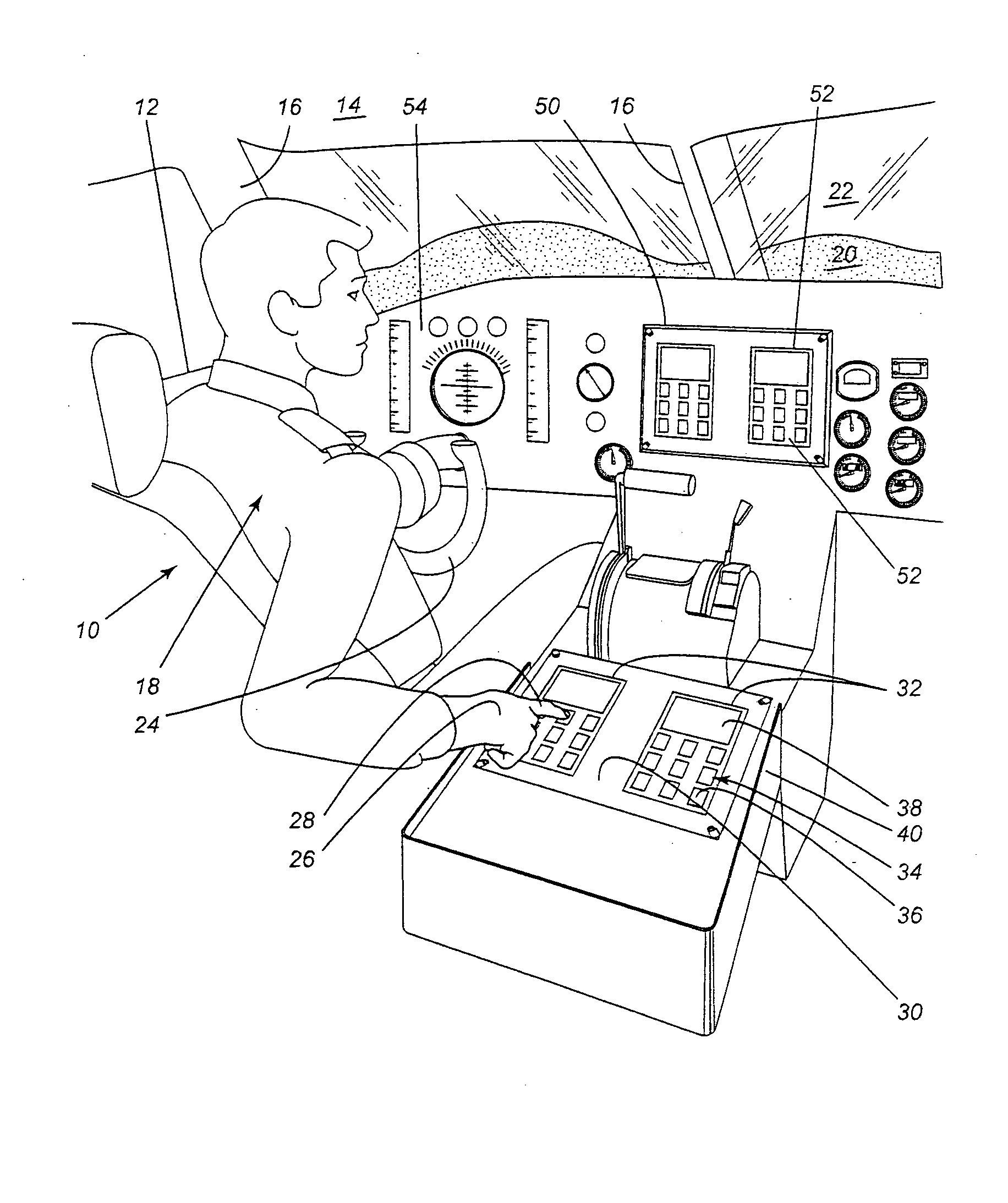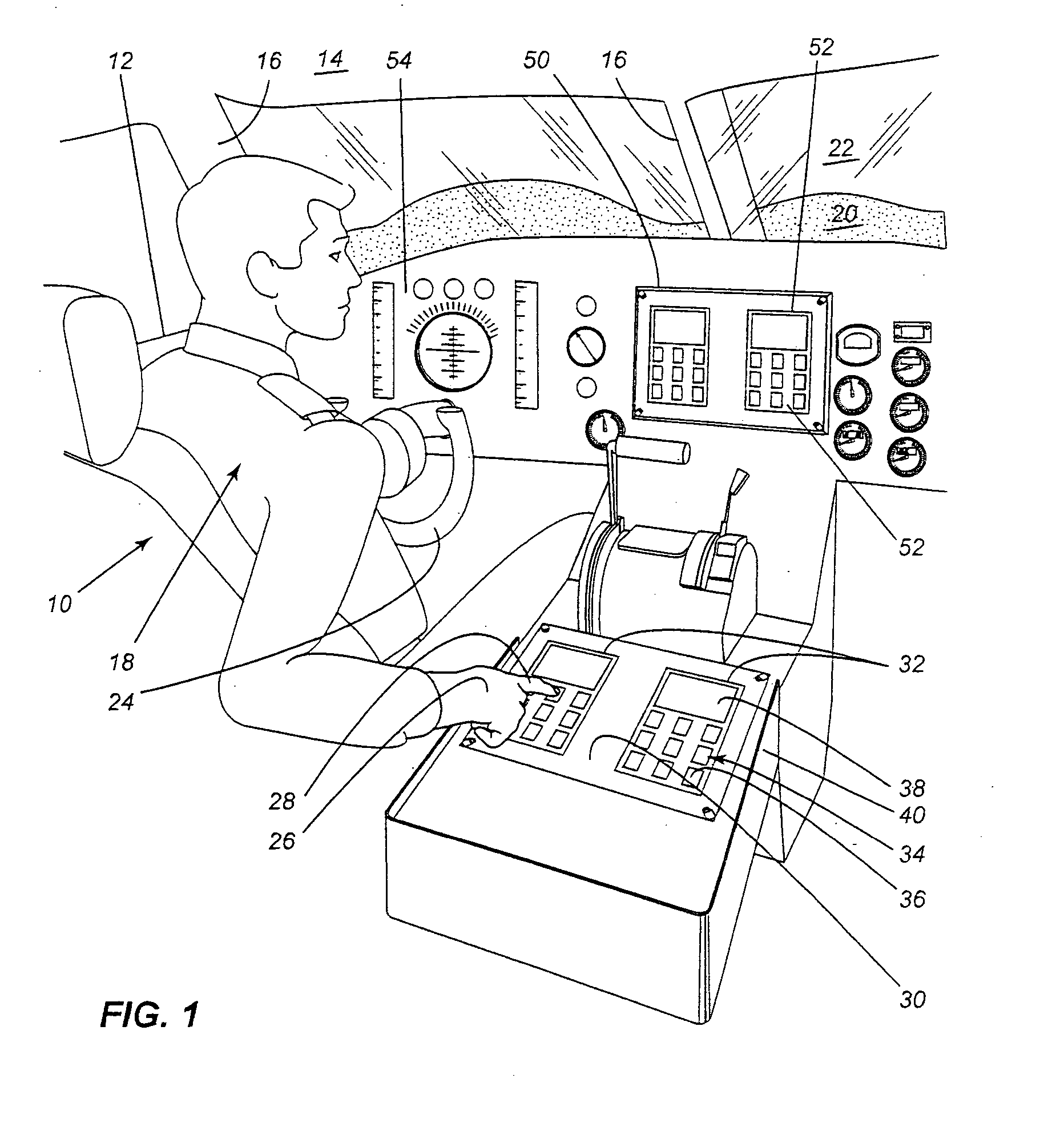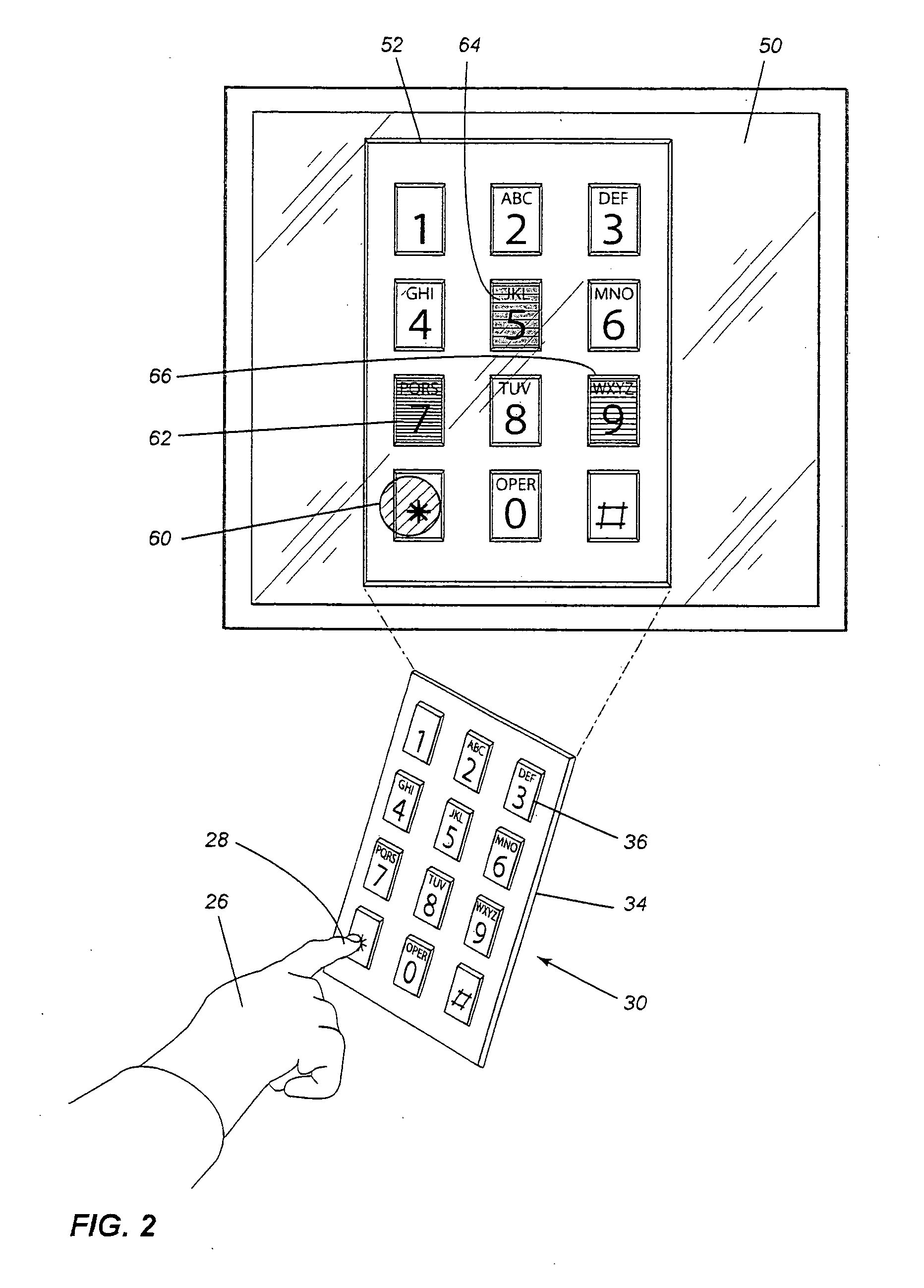Cockpit display system
a display system and display device technology, applied in the field of avionics, can solve the problems of neck and eye strain, aviator's eyes are diverted from the forward-facing field of view, and the aviator's eyes are unable to see forward, so as to facilitate data entry and simplify the representation of the input devi
- Summary
- Abstract
- Description
- Claims
- Application Information
AI Technical Summary
Benefits of technology
Problems solved by technology
Method used
Image
Examples
Embodiment Construction
[0047] In accordance with a preferred embodiment of the present invention, a cockpit display system for displaying aircraft controls and instrumentation is illustrated in FIG. 1. This perspective view of an aircraft's cockpit shows a two-seater side-by-side configuration for a pair of aviators (pilot and copilot) as is commonly found in many fixed-wing aircraft and rotorcraft. Although specific cockpit configurations and layouts are shown in the this and subsequent figures, it should be understood that the embodiments of the present invention can be applied to any type of aircraft cockpit to intelligently display input devices when sought by the aviator's finger or hand.
[0048] As shown in FIG. 1, the cockpit, which is generally designated by reference numeral 10, is situated at a forward portion of an airframe 12 of the aircraft and has a windshield 14 (supported by windshield frame members 16) through which an aviator 18 (i.e. a pilot and optionally also a copilot) can see the out...
PUM
 Login to View More
Login to View More Abstract
Description
Claims
Application Information
 Login to View More
Login to View More - R&D
- Intellectual Property
- Life Sciences
- Materials
- Tech Scout
- Unparalleled Data Quality
- Higher Quality Content
- 60% Fewer Hallucinations
Browse by: Latest US Patents, China's latest patents, Technical Efficacy Thesaurus, Application Domain, Technology Topic, Popular Technical Reports.
© 2025 PatSnap. All rights reserved.Legal|Privacy policy|Modern Slavery Act Transparency Statement|Sitemap|About US| Contact US: help@patsnap.com



